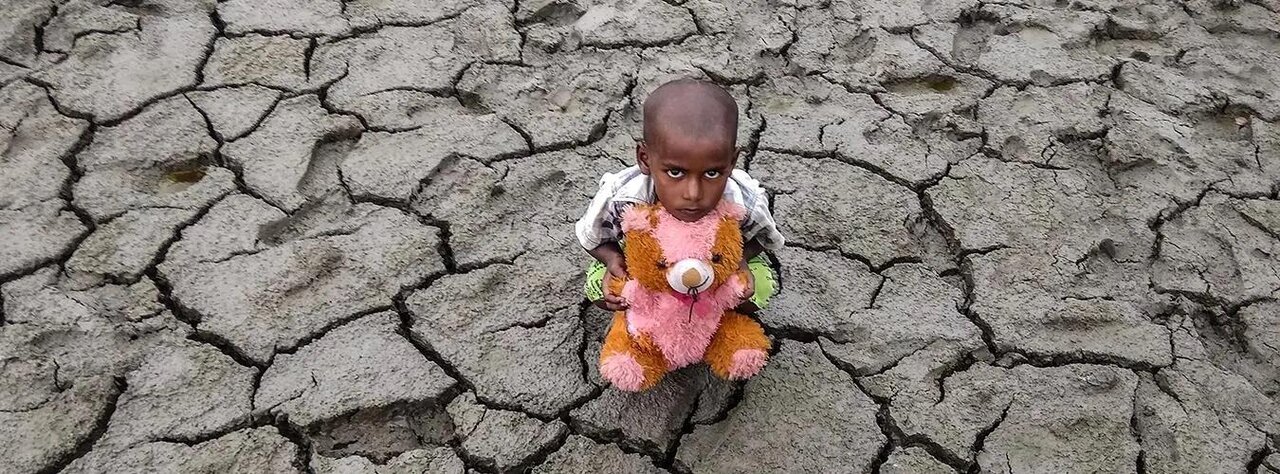Desertification: the greatest challenge to sustainable development

TEHRAN - Desertification is a phenomenon that ranks among the greatest environmental challenges of our time.
According to the United Nations, although desertification can include the encroachment of sand dunes on land, it doesn’t refer to the advance of deserts.
Rather, it is the persistent degradation of dryland ecosystems by climate change and mainly human activities: unsustainable farming that depletes the nutrients in the soil, mining, overgrazing (animals eat away grasses and erode topsoil with their hooves), and clear-cutting of land, when the tree and plant cover that binds the soil is removed.
It occurs when trees and bushes are stripped away for fuelwood and timber, or to clear land for cultivation.
Desertification, along with climate change and the loss of biodiversity, were identified as the greatest challenges to sustainable development during the 1992 Rio Earth Summit.
Two years later, in 1994, the General Assembly established the United Nations Convention to Combat Desertification (UNCCD), the sole legally binding international agreement linking environment and development to sustainable land management, and declared June 17 "World Day to Combat Desertification and Drought.
Later on, in 2007, the UN General Assembly declared 2010-2020 the United Nations Decade for Deserts and the fight against Desertification to mobilize global action to fight land degradation, led again by the UNCCD Secretariat.
This year, the theme of the International Day Against Desertification, and Drought "Her land. Her rights", emphasizes that investing in women’s equal access to land and associated assets is a direct investment in their future and the future of humanity. It's time for women and girls to be at the forefront of global land restoration and drought resilience efforts.
UNCCD's 197 parties (169 affected by desertification) work together to maintain and restore land and soil productivity, and to mitigate the effects of drought in drylands — the arid, semi-arid, and dry sub-humid areas, where some of the most vulnerable ecosystems and peoples can be found.
Since 2017, the UNCCD and its partners supported about 70 drought-prone countries to develop national action plans to reduce drought disasters.
Wind and water erosion aggravate the damage, carrying away topsoil and leaving behind a highly infertile mix of dust and sand. It is the combination of these factors that transforms degraded land into desert.
Impact of desertification on nature and population
Desertification is a global issue, with serious implications worldwide for biodiversity, eco-safety, poverty eradication, socio-economic stability, and sustainable development.
Drylands are already fragile. As they become degraded, the impact on people, livestock, and the environment can be devastating. Some 50 million people may be displaced within the next 10 years as a result of desertification.
The issue of desertification is not new though — it played a significant role in human history, contributing to the collapse of several large empires, and the displacement of local populations. But today, the pace of arable land degradation is estimated at 30 to 35 times the historical rate.
Some two billion people depend on ecosystems in dryland areas, 90% of whom live in developing countries. A downward spiral is created in many underdeveloped countries, where overpopulation causes pressure to exploit drylands for farming. These marginally productive regions are overgrazed, the land is exhausted and groundwater is overdrafted.
Some actions that could help to reduce desertification include reforestation and tree regeneration, water management—saving, reuse of treated water, rainwater harvesting, desalination, or direct use of seawater for salt-loving plants.
Buttressing the soil through the use of sand fences, shelter belts, woodlots, and windbreaks, enrichment and hyper-fertilizing of soil through planting, farmer Managed Natural Regeneration (FMNR), and enabling native sprouting tree growth through selective pruning of shrub shoots can also be helpful.
The residue from pruned trees can be used to provide mulching for fields thus increasing soil water retention and reducing evaporation.
Combating desertification in Iran
Iran is home to about 3.8 percent of the world’s total desert areas. Some 61 percent of the country’s area is covered by arid and semi-arid lands, which is 3.1 times the global average.
Many countries are working to reduce the rates of desertification. Trees and other vegetation are being planted to break the force of the wind and to hold the soil.
Iran has a 70-year history of dealing with desertification and dust control, with about 5 million hectares of planted forests in sand and dust storm hotspots, especially in areas with less than 50 mm of rainfall, Ali Mohammad Tahmasebi, head of the national working group for mitigating sand and dust storms, has said.
Studies by international organizations show that the Islamic Republic has recorded the highest number of reforested desert areas after China, he added.
Parviz Garshasbi, deputy head of the Forests, Rangelands, and Watershed Management Organization has said that according to the Sixth National Development Plan (2016-2021), desert greening measures were to be carried out in 1,140,000 hectares of the country's deserts, but so far, the operations have been conducted in only 350,000 hectares of deserts.
Between 2015 and 2020, approximately 12,000 hectares of forests across the country have been wiped out annually, the Organization has said, putting the country’s forests at 14.3 million hectares
To deal with the problem, the Organization has launched two comprehensive plans to mitigate desertification.
These projects include watershed management, aquifer, flood control, desertification, forest development, rangeland rehabilitation, conservation, and support projects aimed at conserving water and soil, protecting vegetation, preventing erosion, and reducing drought and nutrition damage.
Leave a Comment